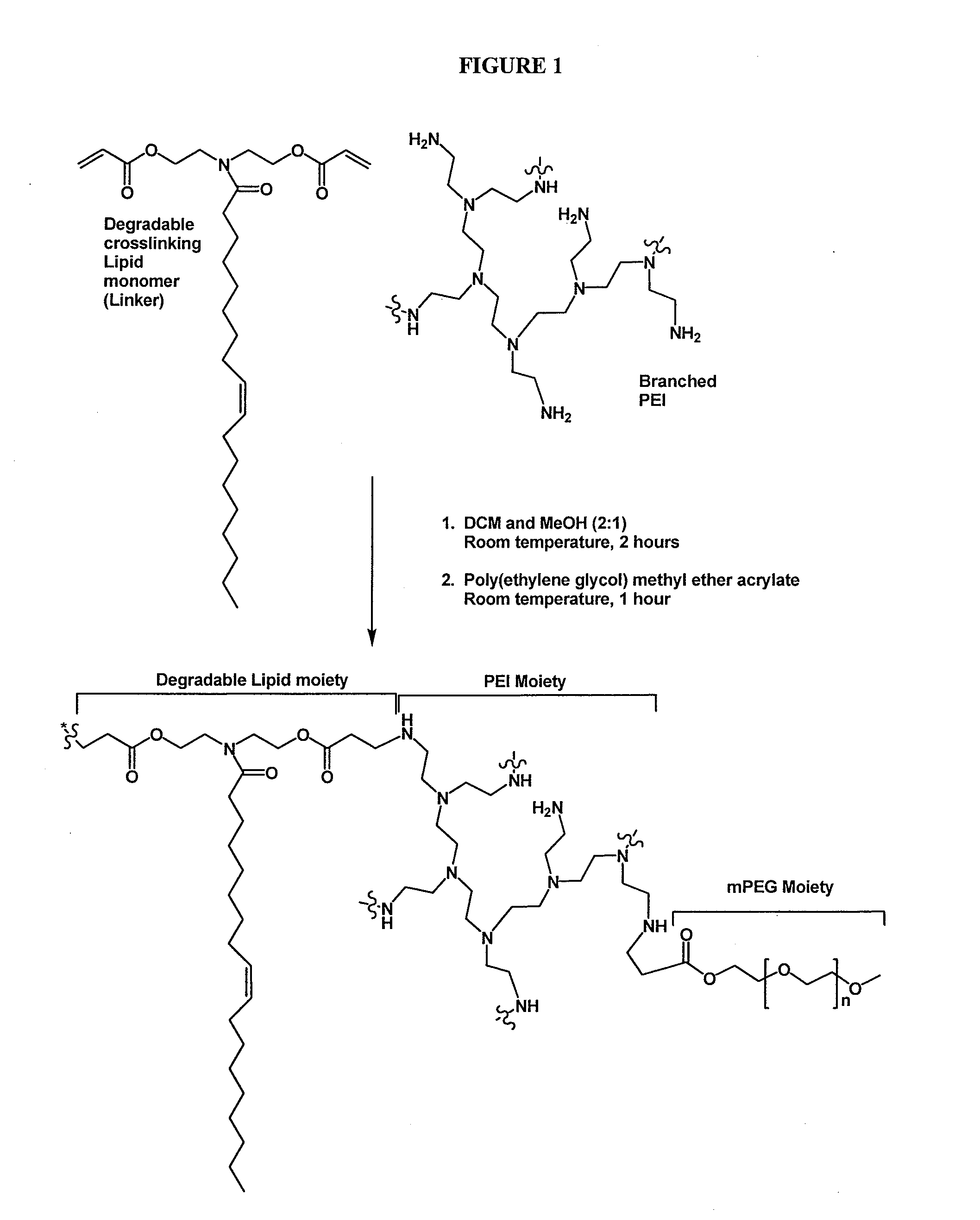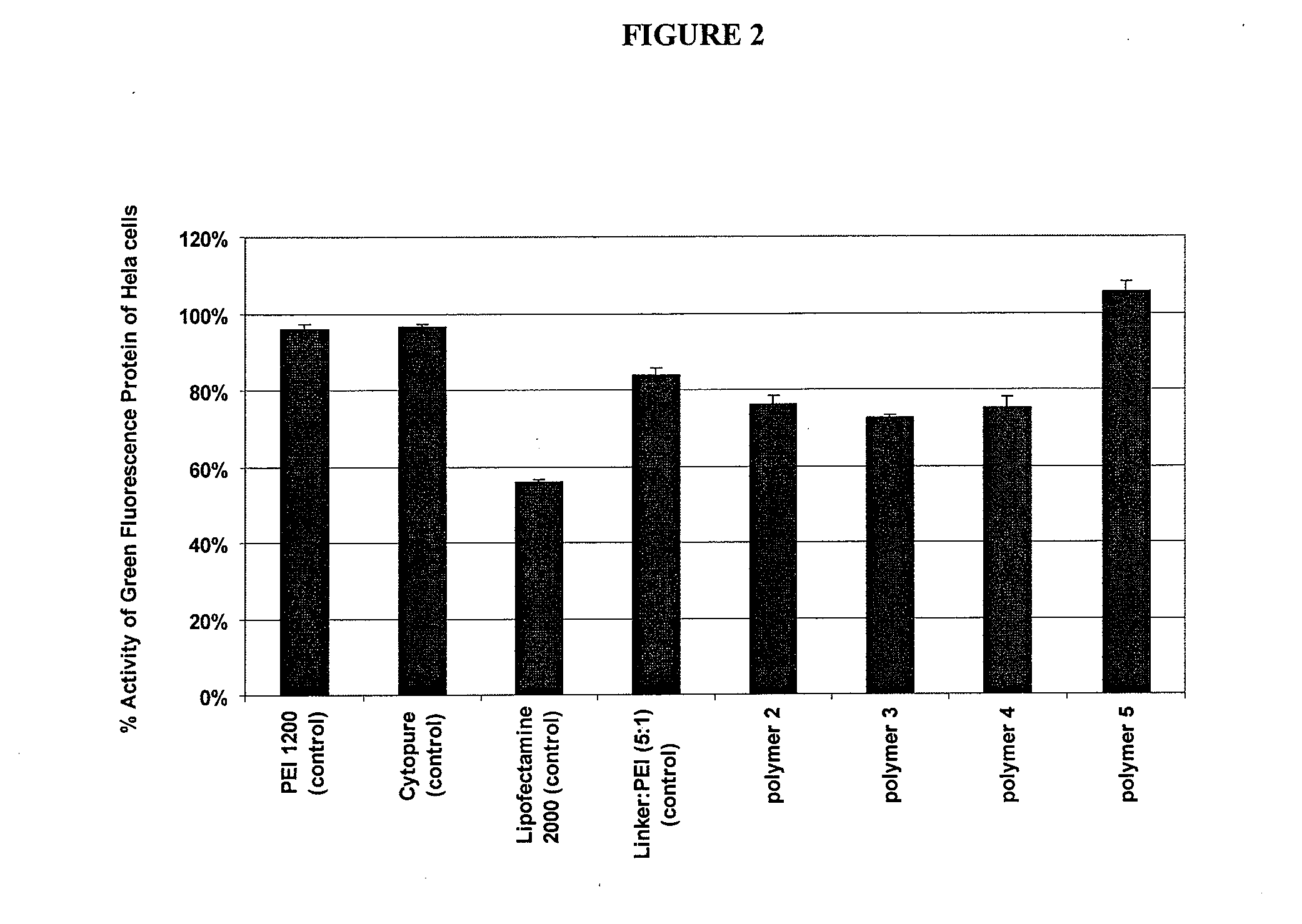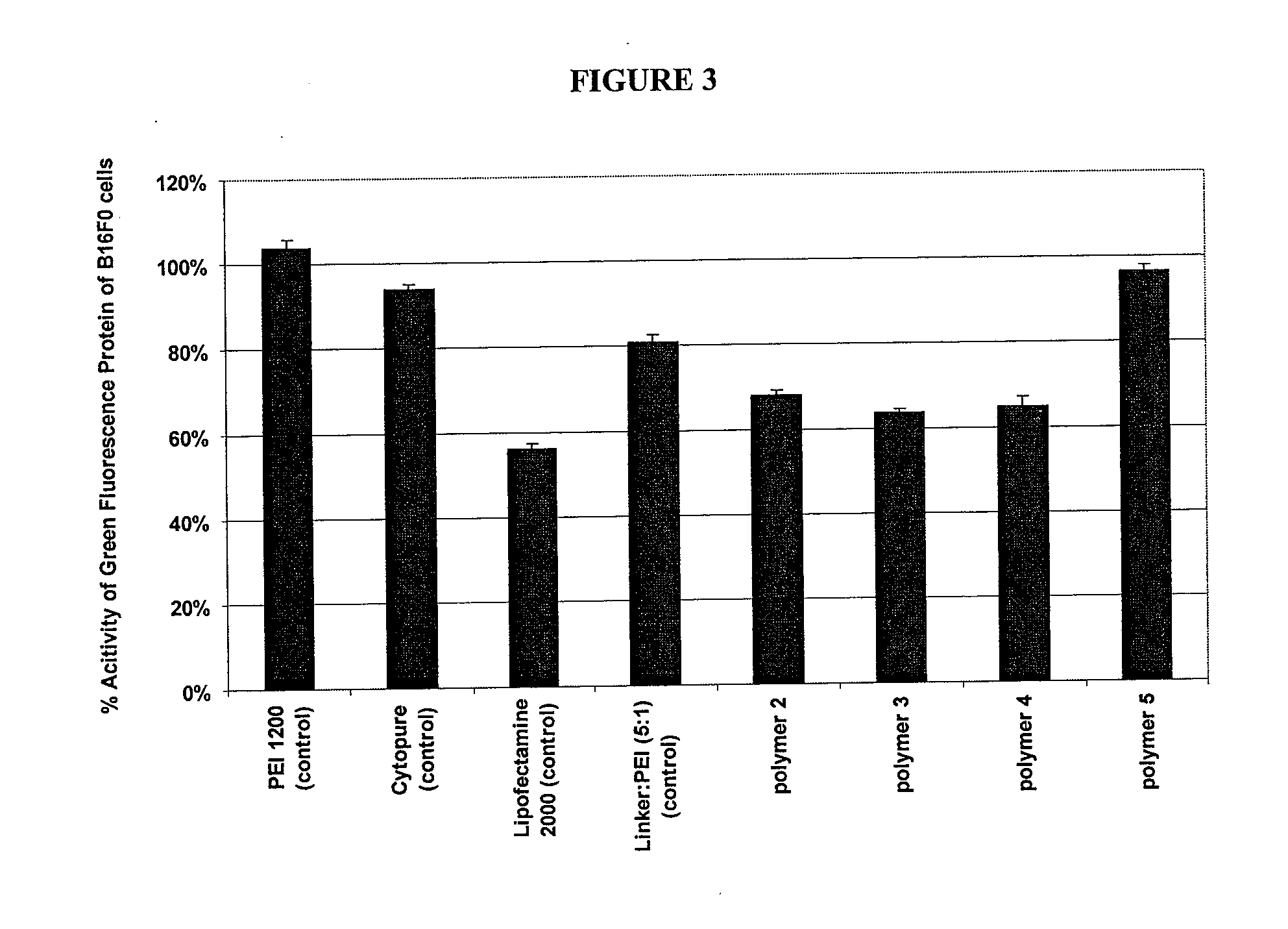Water soluble crosslinked polymers
a crosslinked polymer and water-soluble technology, applied in the field of compositions and methods for delivering sirna into cells, can solve the problems of toxic to cells, poor transfection efficiency, and high molecular weight pll, and achieve the effects of reducing the number of cells and reducing the number of transfections
- Summary
- Abstract
- Description
- Claims
- Application Information
AI Technical Summary
Benefits of technology
Problems solved by technology
Method used
Image
Examples
example 1
Synthesis of Water Soluble Degradable Crosslinked Cationic Polymers
[0127]The schematic outline of synthesis is shown in FIG. 1. PEI (30 mg) was dissolved in methanol (3 mL). A solution of a degradable monomeric reactant of Formula (II) (36 mg) in DCM (dichloromethane) (6 mL) was added into the PEI solution. The mixture was stirred for 4 hours. A solution of mPEG (23 mg) in DCM (2 mL) was added to the mixture. After addition, the mixture was stirred for another 4 hours. The reaction mixture was quenched by adding 2 M hydrochloric acid in diethyl ether. A white precipitate was formed, isolated by centrifugation, and washed with diethyl ether. The water soluble degradable crosslinked cationic polymer product (65 mg, 74% yield) was obtained after drying with high vacuum. The product was confirmed with 1H-NMR.
example 2
Synthesis of Water Soluble Degradable Crosslinked Cationic Polymers
[0128]The schematic outline of synthesis is shown in FIG. 1. PEI (15 mg) was dissolved in methanol (3 mL). A solution of a degradable monomeric reactant of Formula (II) (71 mg) in DCM (6 mL) was added into the PEI solution. The mixture was stirred for 4 hours. A solution of mPEG (11 mg) in DCM (2 mL) was added to the mixture. After addition, the mixture was stirred for another 4 hours. The reaction mixture was quenched by adding 2 M hydrochloric acid in diethyl ether. A white precipitate was formed, isolated by centrifugation, and washed with diethyl ether. The water soluble degradable crosslinked cationic polymer product (65 mg, 74% yield) was obtained after drying with high vacuum. The product was confirmed with 1H-NMR.
example 3
Synthesis of Water Soluble Degradable Crosslinked Cationic Polymer: Polymer 1
[0129]A solution of branched PEI (MW=1200 Daltons, 0.960 g, 0.80 mmol) in a mixture of dichloromethane:methanol (1:2, 8 mL) was added to a solution of a degradable monomeric reactant of Formula (II) (1.91 g, 4.0 mmol) in dichloromethane:methanol (1:2, 40 mL). Before addition, the flask containing a degradable monomeric reactant of Formula (II) was washed with dichloromethane:methanol (1:2, 0.5 mL×4 times). After addition was complete, the reaction mixture was stirred at room temperature for 2 hours.
[0130]A solution of mPEG (MW=454 Daltons, 0.726 g, 1.6 mmol) in dichloromethane:methanol (1:2, 3 mL) was then added. Before addition, the flask containing the mPEG was washed with dichloromethane:methanol (1:2, 0.5 mL×4 times). The reaction mixture was then stirred for additional hour.
[0131]The reaction was then cooled in ice-water for 10 minutes before being quenched with a solution of 2 M hydrochloric acid in e...
PUM
| Property | Measurement | Unit |
|---|---|---|
| Mass | aaaaa | aaaaa |
| Mass | aaaaa | aaaaa |
| Mass | aaaaa | aaaaa |
Abstract
Description
Claims
Application Information
 Login to View More
Login to View More - R&D
- Intellectual Property
- Life Sciences
- Materials
- Tech Scout
- Unparalleled Data Quality
- Higher Quality Content
- 60% Fewer Hallucinations
Browse by: Latest US Patents, China's latest patents, Technical Efficacy Thesaurus, Application Domain, Technology Topic, Popular Technical Reports.
© 2025 PatSnap. All rights reserved.Legal|Privacy policy|Modern Slavery Act Transparency Statement|Sitemap|About US| Contact US: help@patsnap.com



